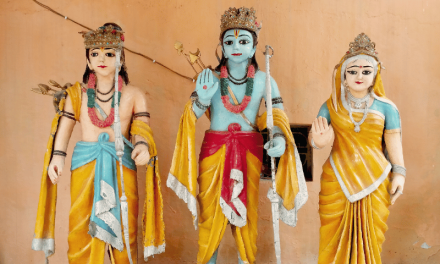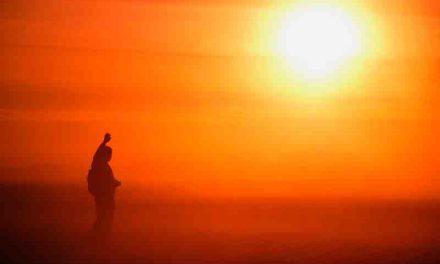The Vajrasuchi Upanishad is a Sanskrit text and an Upanishad of Hinduism. It is classified as one of the 22 Samanya (general) Upanishads, and identified as a Vedanta text. It is attached to the Samaveda, one of the four Vedas that are the ancient scriptures of Hinduism.
The word Vajrasuchi means “diamond-pointed needle”. The Upanishad uses this metaphor to pierce through the false notions of caste and class divisions and to reveal the true essence of a Brahmana, the highest spiritual state of existence.
The Upanishad is in the form of a dialogue between a wandering ascetic named Ashtavakra and a group of Brahmins who are performing a sacrifice. Ashtavakra questions them about their identity and qualifications as Brahmins and challenges them to prove their claims. He then proceeds to give his own answers, based on the Vedantic teachings of non-duality, self-knowledge, and liberation.
Question on the four varnas
The Upanishad begins with Ashtavakra asking the Brahmins: “What is meant by Brahmana? Is it his individual soul? Is it his body? Is it based on his birth? Is it his knowledge? Is it his deeds? Is it his rites?”
The Brahmins are puzzled by this question, as they have always assumed that they are Brahmins by virtue of their birth in a Brahmin family, their performance of rituals and sacrifices, their study of the Vedas, and their observance of moral codes. They wonder how Ashtavakra can doubt their status as Brahmins, and ask him to explain himself.
Answers
Ashtavakra then gives his answers, one by one, refuting each of the possible criteria for being a Brahmana.
- He says that the individual soul is not the basis for being a Brahmana, because the soul is the same in all beings, and does not change with birth or death. The soul is pure consciousness, beyond all distinctions and attributes.
- He says that the body is not the basis for being a Brahmana, because the body is made up of five elements (earth, water, fire, air, and space), and is subject to decay and death. The body is not different from that of animals or plants and does not reflect one’s true nature.
- He says that birth is not the basis for being a Brahmana, because birth is determined by one’s past actions (karma), and does not indicate one’s present or future potential. Birth is also dependent on many factors, such as parents, place, time, and circumstances, which are beyond one’s control.
- He says that knowledge is not the basis for being a Brahmana, because knowledge can be acquired by anyone who studies and learns. Knowledge can also be forgotten or corrupted by ignorance or delusion. Knowledge is not the same as wisdom, which is the direct realization of one’s true self.
- He says that deeds are not the basis for being a Brahmana, because deeds are also influenced by one’s past actions (karma), and do not guarantee one’s liberation. Deeds can also be good or bad, depending on one’s intention and outcome. Deeds are not the same as renunciation, which is detachment from worldly desires and attachments.
- He says that rites are not the basis for being a Brahmana, because rites are external forms of worship and devotion, and do not lead to inner transformation. Rites can also be performed by anyone who follows the rules and regulations. Rites are not the same as devotion, which is love for God or one’s true self.
Brahmana: The Vajrasuchi doctrine
After rejecting all these criteria for being a Brahmana, Ashtavakra gives his own definition of what constitutes a Brahmana. He says:
“A person who has realized his identity with Brahman (the supreme reality), who has transcended all dualities and distinctions, who has renounced all desires and attachments, who has attained peace and bliss within himself, who sees himself in all beings and all beings in himself, who is free from egoism and ignorance, who is devoted to God or his true self – such a person alone is a Brahmana.”
He further adds:
“Such a person can be born in any varna (caste) or ashrama (stage of life), or even outside them. Such a person can be male or female, young or old, rich or poor. Such a person can perform any action or no action at all. Such a person is a Brahmana by his own nature, not by any external factor.”
This is the Vajrasuchi doctrine of the Upanishad, which asserts that anyone can be a Brahmana, regardless of their birth, body, knowledge, deeds, or rites. The only criterion for being a Brahmana is self-realization, which is the ultimate goal of Vedanta and Hinduism.
Epilogue
The Brahmins who hear Ashtavakra’s words are stunned and speechless. They realize that they have been living in ignorance and delusion and that they have not attained the true state of a Brahmana. They bow down to Ashtavakra and ask him to teach them the way to self-realization.
Ashtavakra then instructs them to follow the path of Vedanta, which consists of four steps: discrimination (viveka), detachment (vairagya), discipline (shatsampat) and desire (mumukshutva). He tells them to discriminate between the real and the unreal, to detach themselves from the unreal, to discipline themselves in six virtues (calmness, control, endurance, forbearance, faith, and concentration), and to desire liberation above all else.
He also tells them to practice meditation (dhyana), which is the direct means of attaining self-realization. He tells them to meditate on their true self, which is pure consciousness, beyond all names and forms, beyond all qualities and attributes, beyond all changes and modifications. He tells them to meditate on their true self as “I am Brahman”, “I am That”, “I am”.
He concludes by saying:
“By meditating on one’s true self in this manner, one will gradually overcome all ignorance and delusion and will realize one’s identity with Brahman. One will then become a Brahmana in the true sense of the word and will attain liberation from all bondage and suffering. This is the essence of the Vajrasuchi Upanishad.”





